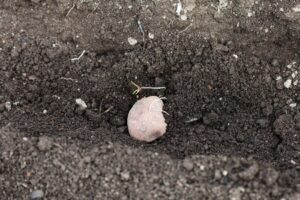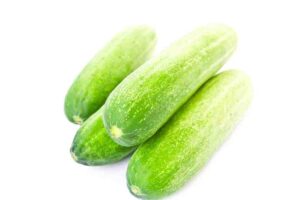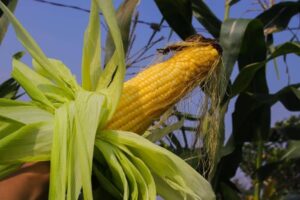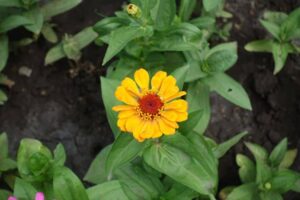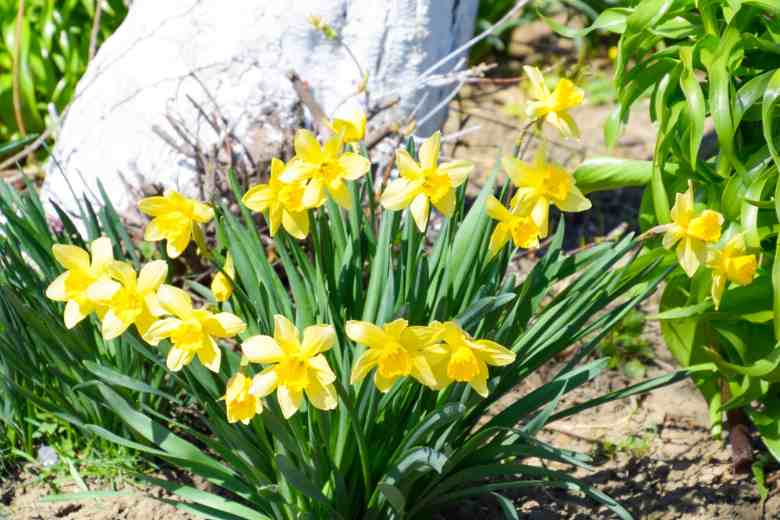
In North Carolina (NC), the ideal time to plant daffodil bulbs is in the fall, between October and December. Daffodils are hardy and will survive through the winter when they are planted in well-drained soil with plenty of organic matter.
In case, you plant them too early in the fall, they may not have time to establish their root system before the ground freezes. Planting daffodils in the fall will ensure that they are ready to bloom in the spring.
Factors to Consider When Planting Daffodil Bulbs
When it comes to planting daffodil bulbs, there are a few factors to consider.
Firstly, it is important to choose a site with good drainage and good air circulation.
Secondly, the soil should be well-draining and amended with organic matter to help retain moisture. Additionally, it is important to select a location with full sun or partial shade and to avoid areas that are prone to flooding or standing water.
Lastly, the bulbs should be planted at the recommended depth and spaced approximately 6 to 8 inches apart.
By following these tips, you can ensure that your daffodil bulbs will bloom and grow healthy and strong.
Best Time to Plant Daffodil Bulbs in NC
In North Carolina, the best time to plant daffodil bulbs is in the late summer or early fall. This gives the bulbs enough time to root and settle in before the cold winter sets in.
Planting your bulbs early in the season also gives them plenty of time to develop strong roots, making them more likely to produce a beautiful display of flowers in the spring.
To ensure your daffodils bloom in abundance, choose a sunny spot in your garden that is well-drained and dig the holes about 6-8 inches deep.
Plant your bulbs with the pointy end facing up and cover with soil. With a little bit of planning and preparation, you can enjoy beautiful blooms of daffodils in the spring.
Planting Daffodil Bulbs in Various Soil Types
Daffodils, known scientifically as Narcissus, are among the most cheerful spring-blooming bulbs. They’re generally easy to grow and can thrive in a range of soil types. Here’s a guide on how to plant daffodil bulbs in different types of soil:
1. General Planting Guidelines:
- Planting Time: Daffodils should be planted in the fall, a few weeks before the ground freezes.
- Depth: Bulbs should be planted about 2-3 times their own height deep. Typically, this is about 3-6 inches deep.
- Spacing: Space bulbs about 3-6 inches apart.
- Sunlight: Daffodils prefer full sun, but they will tolerate some shade, especially in warmer climates.
2. Planting in Various Soil Types:
A. Loamy Soil:
- Loamy soil is ideal for most plants, including daffodils, because it’s a balanced mix of sand, silt, and clay. It retains moisture without staying soggy.
- Ensure good drainage by adding some coarse sand or compost if the soil feels too compacted.
- Add a balanced, slow-release fertilizer at the time of planting if the soil isn’t already rich.
B. Sandy Soil:
- Sandy soil provides excellent drainage, but it doesn’t retain moisture very well. This can be good for daffodils as they dislike waterlogged conditions.
- Enrich the soil with organic matter like compost or well-decomposed manure to improve its ability to retain moisture.
- Check moisture levels more frequently, especially during dry spells, and water accordingly.
C. Clay Soil:
- Clay soils retain moisture and can become waterlogged, which daffodils don’t appreciate.
- Improve the soil’s drainage by adding organic matter and coarse sand or grit.
- Consider planting bulbs in raised beds or on mounds to ensure better drainage.
- If the clay is too heavy, it might be easier to grow daffodils in containers filled with a well-draining potting mix.
D. Acidic or Alkaline Soil:
- Daffodils are quite adaptable but prefer slightly acidic to neutral soil (pH 6-7).
- If your soil is too acidic (below pH 6), you can add garden lime to raise the pH.
- If it’s too alkaline (above pH 7), you can add sulfur or organic matter to lower the pH.
3. Aftercare:
- Water the bulbs after planting to settle the soil.
- Mulching with organic material can help retain soil moisture and suppress weeds.
- Once daffodils have finished blooming in the spring, allow the foliage to die back naturally. This will enable the bulbs to store energy for the next growing season.
- Avoid cutting back the foliage until it has yellowed and withered.
- In very fertile soils, daffodils may not need annual feeding. In less fertile soils, consider applying a balanced bulb fertilizer each fall.
By understanding the unique needs of daffodils and the characteristics of various soil types, you can create the ideal environment for these spring beauties to thrive.
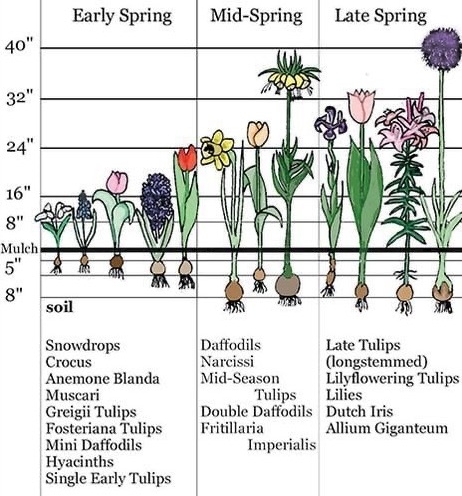
Planting Daffodil Bulbs in Containers
Planting daffodil bulbs in containers is a great way to brighten up any outdoor space. Not only does it add beauty to your garden, it also helps create an inviting atmosphere.
Planting your bulbs is easy and doesn’t require a lot of effort. Simply choose the right container, provide the right soil and environment, and you’ll soon have a wonderful display of daffodils! With proper care and maintenance, your daffodil bulbs can be enjoyed for years to come.
So, don’t wait any longer – get planting and add a splash of color to your garden!
Proper Care for Daffodil Bulbs
Daffodil bulbs are a great way to bring a bit of life and color to your garden, but they require a bit of proper care to remain healthy and vibrant. To ensure your daffodils thrive, you should plant them in well-drained soil with plenty of organic matter.
During their growing season, be sure to water the bulbs regularly and fertilize them with a balanced fertilizer. In the winter months, you should stop fertilizing and reduce the amount of water given.
In late fall, you should also lift the bulbs, clean them and store them in a cool, dry place until it’s time to replant them in the spring. With these simple steps, you can enjoy a beautiful daffodil garden year after year!
Harvesting Daffodil Bulbs
Harvesting daffodil bulbs is a great way to get your garden ready for the next season. Whether you are planting for the first time or simply trying to spruce up your garden, harvesting daffodil bulbs is a great way to get started.
After the blooms have faded, the bulbs can be dug up and stored until the next season, allowing you to enjoy the beauty of the daffodils again and again.
With a bit of patience and some careful tending, you can easily harvest and store daffodil bulbs so that you can enjoy a colorful display in your garden for many years to come.
FAQs About the when to plant daffodil bulbs in nc
When is the best time to plant daffodil bulbs in North Carolina?
Answer: The ideal time to plant daffodil bulbs in North Carolina is in late August or early September.
How deep should I plant daffodil bulbs in North Carolina?
Answer: In North Carolina, you should plant daffodil bulbs 8-10 inches deep.
What type of soil should I use when planting daffodil bulbs in North Carolina?
Answer: Well-drained, alkaline soil is best for planting daffodil bulbs in North Carolina. You can also add compost or peat moss to improve drainage.
Conclusion
Daffodil bulbs should be planted in the fall in North Carolina (NC). Planting in October or November is ideal, but bulbs can be planted through December if necessary. Daffodils will bloom in the spring and add beauty to the landscape.

